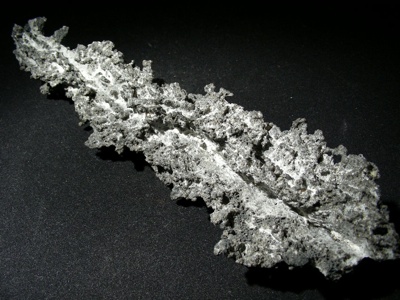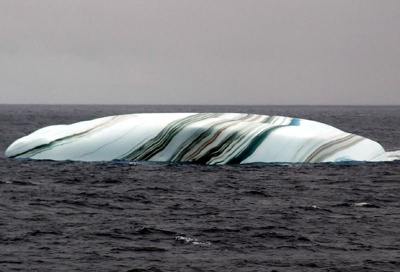 History
History  History
History  Technology
Technology Top 10 Everyday Tech Buzzwords That Hide a Darker Past
 Humans
Humans 10 Everyday Human Behaviors That Are Actually Survival Instincts
 Animals
Animals 10 Animals That Humiliated and Harmed Historical Leaders
 History
History 10 Most Influential Protests in Modern History
 Creepy
Creepy 10 More Representations of Death from Myth, Legend, and Folktale
 Technology
Technology 10 Scientific Breakthroughs of 2025 That’ll Change Everything
 Our World
Our World 10 Ways Icelandic Culture Makes Other Countries Look Boring
 Misconceptions
Misconceptions 10 Common Misconceptions About the Victorian Era
 Mysteries
Mysteries 10 Strange Unexplained Mysteries of 2025
 History
History 10 Things You Didn’t Know About the American National Anthem
 Technology
Technology Top 10 Everyday Tech Buzzwords That Hide a Darker Past
 Humans
Humans 10 Everyday Human Behaviors That Are Actually Survival Instincts
Who's Behind Listverse?

Jamie Frater
Head Editor
Jamie founded Listverse due to an insatiable desire to share fascinating, obscure, and bizarre facts. He has been a guest speaker on numerous national radio and television stations and is a five time published author.
More About Us Animals
Animals 10 Animals That Humiliated and Harmed Historical Leaders
 History
History 10 Most Influential Protests in Modern History
 Creepy
Creepy 10 More Representations of Death from Myth, Legend, and Folktale
 Technology
Technology 10 Scientific Breakthroughs of 2025 That’ll Change Everything
 Our World
Our World 10 Ways Icelandic Culture Makes Other Countries Look Boring
 Misconceptions
Misconceptions 10 Common Misconceptions About the Victorian Era
 Mysteries
Mysteries 10 Strange Unexplained Mysteries of 2025
15 Fascinating Lesser-Known Science Facts
This is actually our third list of science facts, but here we have focussed especially on lesser-known trivia. Hopefully you will find at least a handful of items here that are completely new to you. Be sure to add your own fascinating facts to the comments. If you wish to read the previous lists of facts, they are: Top 20 Amazing Science Facts, and Another 15 Amazing Science Facts.
1. An iceberg contains significantly more total heat energy than a burning match. The reason is the sheer size of the iceberg. [Source]
2. Caves breathe. They inhale and exhale great quantities of air when the barometric pressure on the surface changes, and air rushes in or out seeking equilibrium. [Source]
3. While the chances of being struck by a meteor are extremely slim, there have been a number of documented cases: On June 21, 1994, Jose Martin of Spain was driving with his wife near Madrid when a 3-pound (1.4-kilogram) meteor crashed through his windshield, bent the steering wheel and ended up in the back seat. Martin suffered a broken finger while his wife was uninjured. [Source]
4. When a new queen bee emerges in a hive, she “pipes” (repeatedly sings a G# or A note) to incite her worker bees to fight for her if another queen in the hive needs killing. You can listen to the piping in the youtube clip above. All bees pipe the same note – but Africanized bees pipe more frequently and louder. You can hear another clearer example here. The difference in pitch between the video clip and the sound file is cause by compression and quality of recording devices.
5. There is a current scientific hypothesis that the sun has a companion which is currently about 1-1.5 light years away. It is believed that it has an elliptical orbit which, every 26 million years, sends matter towards the earth causing mass Extinction events. It was the discovery of these seemingly regular events that gave rise to the hypothesis in the first place. The star is predicted to be most likely a red or brown dwarf and has been named Nemesis or “Death Star”. [More]
6. Fulgurite is the name for fossilized lightning. They are natural hollow glass tubes formed in quartzose sand, or silica, or soil by lightning strikes and are formed when lightning with a temperature of at least 1,800 degrees Celsius instantaneously melts silica on a conductive surface and fuses grains together. The image above is a fulgurite.
7. When Anders Celsius (1701–1744) created the celsius scale, he invented it upside-down with 0 ? being the boiling point of water and 100 ? being the freezing point. It was reversed in the year of Celsius’ death by Carolus Linnaeus.
8. When dropped on a very hard, rigid surface, glass balls and steel balls will bounce higher than rubber ones. The reason is that rubber balls deform significantly on impact, flattening onto the surface, and then springing back. In the process of this squashing, some energy is lost. [Source – physics.illinois.edu]
9. 65 Million years ago, a meteor impact in Chicxulub, Mexico caused megatsunamis thousands of feet high. It is believed by some scientists that this impact was the single cause of the extinction of the dinosaurs. [More]
10. Sound travels much faster through a steel than it does air: Sound travels at 5100 m/s through steel, 1480 m/s through water and 330 m/s through air.
11. Most icebergs are salt-free water caused by mainland glaciers. Some sea-water icebergs do exist – they are green. When an icebergs pics up sea-water, it can create green stripes. Additionally, normal water that freezes more rapidly in the ‘berg can cause blue stripes. These are quite stunning to see and the picture above is a good example of this effect. Click the image above for a larger view; and no, it isn’t photoshopped. Here’s proof.
12. The cracking sound of a whip is actually a sonic boom – this is because the tip of the whip travels faster than the speed of sound. The whip is the first man made device capable of exceeding the sound barrier.
13. At this moment, the earth is in the middle of an ice age which began around 2.58 million years ago. We are in an interglacial period which started between 10,000 and 15,000 years ago and may last for a further 50,000 years before global glaciation begins again. [Source – NASA]
14. The Nintendo gaming software company first opened its doors to business in 1889 as “Nintendo Koppai”. Its first product? Playing cards. [Why is this item on the list? Computer science.]
15. The world’s first nuclear reactor was built in a squash court beneath a Chicago football stadium on December 2, 1942. While it only generated enough power to light a flashlight, it proved that nuclear power was feasible.








![11 Lesser-Known Facts About Mass Murderer Jim Jones [Disturbing Content] 11 Lesser-Known Facts About Mass Murderer Jim Jones [Disturbing Content]](https://listverse.com/wp-content/uploads/2020/09/jonestown2-copy-150x150.jpg)

